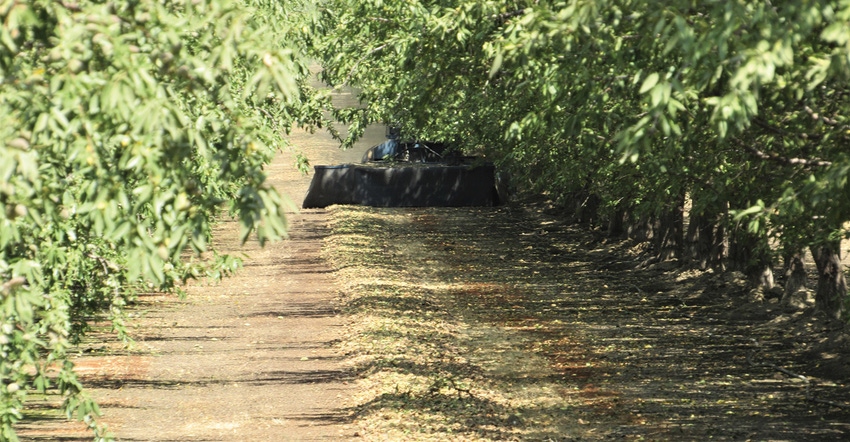
There are some tools that spend the better part of their life at the bottom of the toolbox --- available if needed, but seldom used unless a special need requires.
The Almond Hull-Split Prediction Model is such a tool. A timely harvest is essential for maintaining almond nut quality and the ability to predict a date of harvest maturity early in the season benefits growers because of the set of complicated logistics they need to contend with later in the season.
“It used to be a case of by-guess and by-golly,” said University of California, Davis plant scientist Ted DeJong. “In the past, basically what growers did was they looked at the date of bloom and as the season progressed, they would judge hull-split based on what the trees looked like or by cutting open the fruits/nuts.
“Our study, eight years of data taken from three growing regions (central, south, and north valleys of California), adds some science by predicting a date for almond hull-split based on temperature readings after bloom,” he said.
Initial research began with peach fruit development and predictability of harvest date for specific varieties based on several years of bloom and harvest data correlated with weather and temperature (heat accumulation during the first 30 days post-bloom). “We found we could predict within a few days the date of harvest and that proved very helpful for stone fruit growers who deal with a lot of logistical stuff related to harvest and marketing fresh crops,” DeJong said.
The hull-split prediction model is based on the concept that the rate of fruit development from bloom to 1% hull-split is highly dependent on early spring temperatures. Another factor, the rate of fruit development between 1-100% hull-split varies greatly among age and cultivars.
“Early fruit development in almonds is quite sensitive to spring air temperatures,” said DeJong, noting that 28 almond cultivars were evaluated in the study which ultimately used a dozen of the more common — from Nonpareil to Butte and Padre — as applicable to the predictive model.
Climate impacts?
Because temperature is an important variable, DeJong was asked if current calculations considered the concept of a changing climate.
“We think the calculations will be the same because they are biological, basically predicting the biological development of crop development based on temperature and its relationship with similar cultivars with similar varieties,” he said. “Those relationships don’t change although with consistently warmer spring times, growers need to be aware their crop may mature faster than it used to.”
Because almond growers farm hundreds if not thousands of acres of nut trees, ascertaining an accurate harvest time is a big deal.
“They need to plan a whole bunch of logistical factors from needed harvest equipment to when trees are mature and harvest actually begins,” he said. “Growers can go to their nearest weather station (there are over 100 of them up and down the valley) and combine that data with the date of bloom to calculate growing degree days. Taking nearly a decade worth of data in the predictor draws a relationship between bloom and hull-split date.”
Admitting that even though the model has been in use for nearly a decade, “I know stone fruit growers have been using it for some time, but I don’t know how many nut growers do because they don’t come back to us and say, ‘Wow, this is great.’”
But the Almond Hull-Split Model is statistically valid, another tool in the almond growers toolbox, waiting quietly to be put to use.
Further information on the prediction model is available from the University of California Davis Fruit & Nut Research and Information Center.
Read more about:
AlmondsAbout the Author(s)
You May Also Like




